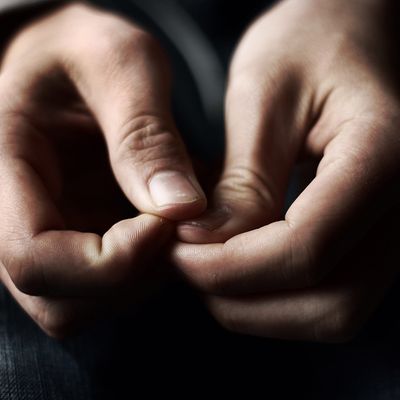
So many of the ways we express fear are things to be feared in their own right: Emetophobia, for instance, is fear of vomiting; illyngophobia is the fear of dizziness; phobophobia, more generally, is the fear of the physical arousal that the feeling of fear creates. And closely related to that last one, as psychologist Ellen Hendriksen explained in a recent blog post, is something called “anxiety sensitivity,” best summed up as anxiety about anxiety itself.
“It’s a belief that the physiological experience of anxiety itself, like a racing heart, sweating, or shaking, is dangerous and could lead to devastating outcomes,” she wrote. “In other words, it’s the tendency to interpret anxious sensations as catastrophic—it really is fear of fear”:
For example, someone with high anxiety sensitivity might fear the dizziness that comes with being anxious, thinking it means they’re going to snap and have a mental breakdown. Another might fear the pounding heart that comes from walking into a room of strangers, thinking a heart attack is around the corner. Yet another might interpret their nervous trembling as a sign that they’re losing control of their faculties.
Anxiety sensitivity in and of itself isn’t necessarily a sign of an anxiety disorder, Hendricksen wrote. It’s just one of a host of factors that increases your risk, along with genetics and life circumstances — and unlike those other two, it’s a factor that’s somewhat within your control: One of the best ways to combat or prevent anxiety sensitivity, she explained, is exercise, which helps you become more comfortable with discomfort. Physical activity and anxiety often have similar side effects — sweating, pounding heart, fast breathing. By throwing yourself into the former, then, you’re indirectly exposing yourself to the symptoms of the latter, only in a less threatening context.
Another strategy, which also relies on context, is to reframe those same symptoms in a positive light — connecting feelings of dizziness back to memories of a childhood spin on a roller coaster, for example, or doing neck-rolling exercises that make you feel a relaxing, gentle kind of dizzy, rather than a scary one. And Hendriksen’s last tip, along those same lines, is forcing yourself to consider your symptoms in a more realistic light, reminding yourself of their limited scope.
“I had a client who felt dizzy whenever she looked down from a height, like a bridge or a balcony, and interpreted her dizziness as an existential crisis: ‘Does this secretly mean I want to jump off the bridge? What if I freak out and and kill myself?’” Hendricksen wrote. “By contrast, when she started thinking about her symptoms as simple vertigo, her fear disappeared.” The antidote to anxiety sensitivity, in other words, isn’t getting rid of anxiety symptoms entirely — it’s just interpreting them the right way.

